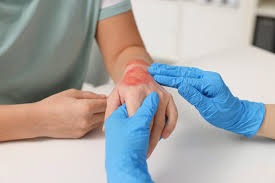Wound management is a critical aspect of healthcare that involves proper care and treatment to ensure efficient healing. Whether the injury is minor or severe, the right approach to wound care can make a significant difference in recovery times and the prevention of complications such as infections or scarring. In this comprehensive guide, we will explore the essential components and practices of effective wound healing solutions.
Understanding Wound Types
Different types of wounds require specific care strategies. Acute wounds, such as surgical incisions, typically have a predictable healing process, whereas chronic wounds, like diabetic foot ulcers, may take longer to heal due to underlying health conditions. Recognising the nature of the injury is the first step in determining the appropriate wound care protocol.
Wound Healing Phases
Healing is a complex process that can be broken down into four distinct phases: haemostasis, inflammation, proliferation, and remodelling. Each stage plays a pivotal role in wound closure and tissue repair, and disruptions in this sequence can prolong healing or cause non-healing chronic wounds.
During the haemostasis phase, the body works to stop the bleeding through clot formation. Following this, the inflammatory phase clears the wound of debris and bacteria, setting the stage for the proliferation phase, where new tissue and blood vessels are formed. Finally, the remodelling phase strengthens the tissue and restores some of its elasticity.
Cleaning and Protecting the Wound
Initial wound management should include cleaning with sterile saline or a gentle cleanser to remove any potential contaminants. After cleaning, it is crucial to protect the wound. Dressings play a significant role in maintaining a moist environment that is conducive to healing, absorbing excess exudate, and preventing infection. There are many types of dressings available, and the choice depends on the wound’s condition and location.
The Role of Nutrition in Wound Healing
Nutrition cannot be overlooked when considering wound care strategies. The body requires additional resources to facilitate tissue repair, including proteins, vitamins such as A and C, and minerals like zinc. A balanced diet or appropriate nutritional supplements can provide these building blocks for efficient healing.
Infection Control
Infections can severely impede wound healing and potentially lead to more serious systemic issues. Signs of infection include increased pain, redness, swelling, and pus discharge. Keeping the wound clean and properly dressed is key to avoiding infections. Additionally, systemic antibiotics may sometimes be necessary as determined by a healthcare professional.
Choosing the Right Wound Dressing
The selection of a wound dressing is influenced by various factors such as the wound type, size, location, and the amount of exudate. There are foam dressings, hydrocolloids, alginates, and transparent films, among others. Each category has specific properties tailored to different wound requirements, and occasionally, dressings may need to be changed as the wound heals.
Pain Management
Pain is a common symptom associated with wounds, and managing it is essential for patient comfort. Pain management strategies may include the use of analgesics and ensuring the gentle application of dressings. Proper wound care can also minimise pain by preventing complications that exacerbate discomfort.
Mobilisation and Activity
Although rest is essential for healing, too much immobility can also be detrimental. Depending on the wound’s location and stage of healing, controlled mobilisation can enhance blood flow and promote faster healing. However, excessive movement or pressure on the wound site must be avoided.
Monitoring Progress and Seeking Professional Advice
Regular monitoring of the wound for signs of healing or complications is vital. Any negative changes or a lack of progression in healing should prompt consultation with a healthcare professional. Timely medical intervention can address issues before they escalate into more significant problems.
READ MORE : Toronto Physiotherapy Guide: Trusted Clinics and Patient Care
Advanced Wound Care Treatments
When traditional wound care methods do not result in satisfactory healing, advanced treatments may be considered. These may include negative pressure wound therapy, hyperbaric oxygen therapy, and the use of growth factors or skin grafts. Such interventions are often reserved for complex or non-healing chronic wounds.
Education and Empowerment
Educating patients about proper wound care practices is critical for successful recovery. Understanding the reasoning behind wound care choices empowers patients to participate actively in their treatment plans. Support from healthcare professionals and access to high-quality wound care resources are also crucial components of effective healing.
Conclusion
Effective wound care is multi-faceted and requires a comprehensive understanding of the wound healing process, proper selection and use of dressings, attention to nutrition, infection prevention, and pain management. By following these guidelines, individuals can promote optimal healing outcomes. It’s always advisable to seek guidance from healthcare professionals for tailored advice and advanced wound treatment options when necessary.
References
While this article serves as a guide, it is not a substitute for professional medical advice. Always consult with a healthcare provider for specific wound care recommendations tailored to individual needs and circumstances.
“`
